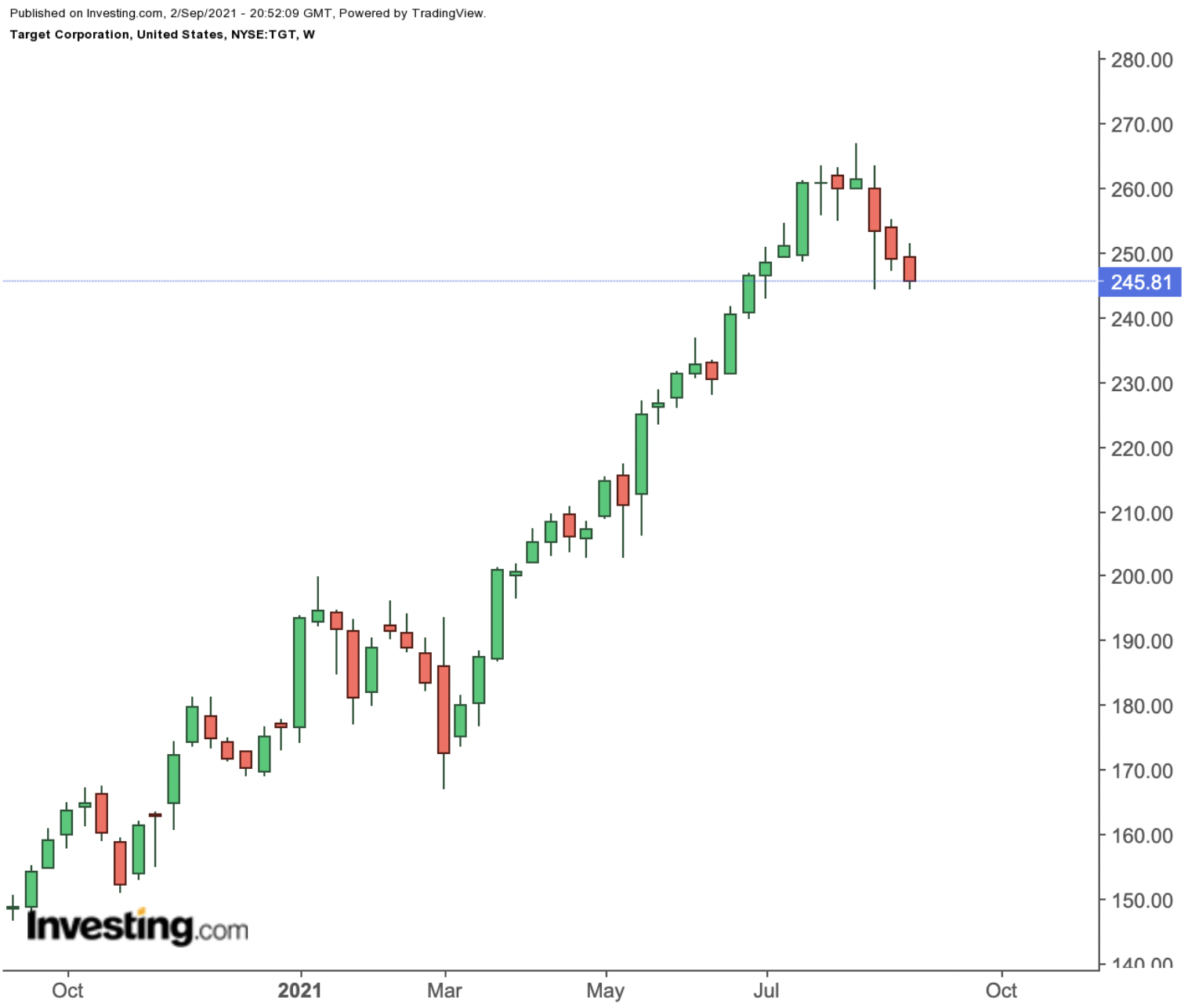It’s always a sound investing strategy to keep some defensive stocks in your portfolio. The retail sector offers some good options for long-term buy-and-hold investors. These companies, with wide economic moats, vast brick-and-mortar empires and increasing dividend payouts, provide safety that investors need during uncertain times.
If you’re seeking to diversify your portfolio by adding some solid retail stocks, then shares of two big-box retailers—Target (NYSE:) and Lowe’s (NYSE:)— are looking attractive again. But which provides a better bargain after their impressive run during the pandemic? Below we take a closer look.
Target: Strong Cash Generation Continues
The COVID-19 pandemic provided an unprecedented surge in sales volumes for big-box retailers as consumers stocked their pantries to avoid additional trips to stores.
But when you look at the share performances of these companies, Target stands out as a clear winner. Its stock has soared more than 60% in the past year, far outpacing the gains its competitors have delivered. Yesterday, Target closed at $245.81.

The reason behind this strength?
Minneapolis-based Target has been able to keep its store traffic strong. But as the pandemic-fuelled boom cools and sales return to a more normal level, the chain is seeing some slowdown.
Same-store sales, a key measure of retail performance, rose 8.9% in the , narrowly beating a consensus estimate of 8.2%. That was less than half the gain from a year ago. Meanwhile, profit margins tightened and e-commerce revenue rose by 10% after nearly tripling a year ago.
That slowdown, however, was very much expected, given the highly unusual demand created by the pandemic. In the post-pandemic environment, Target is well-positioned to benefit from its recent restructuring of its stores, which the company is using as mini distribution centers for its booming digital business, to better fulfill online orders.
Target told investors in July that 95% of total online sales were fulfilled by stores—a testament to the company’s investments integrating its 1,900 locations into the online supply chain.
With its unique online and brick-and-mortar integration, Target is also a great income stock. In June, the company announced a massive 32% hike in its quarterly payout to $0.9 a share. With that increase, 2021 is on track to be the 50th consecutive year in which Target has increased its annual dividend.
In a statement, Michael Fiddelke, chief financial officer said:
“Given strong operating performance and cash generation, our business is well-positioned to support this robust increase in the dividend, even as we ramp up capital investments in our business and continue to invest in our team.”
Lowe’s: A Solid Housing Play
The home-improvement giant, Lowe’s is another solid candidate to consider for long-term investors. The No. 2 home retailer has outperformed the broader market this year, benefiting from the stay-at-home environment that prompted many Americans to put more money into their homes.
Analysts expect this trend to continue as we see more people moving out of big cities and heading to the less crowded suburbs as work from home becomes a norm after the pandemic.
This de-urbanization, low interest rates and the massive savings that Americans have accumulated during the pandemic point to continued gains for home-improvement stocks.
Last month, Lowe’s reported better-than-expected and raised its sales forecast, as it grabbed more business from home contractors. The North Carolina-based retailer said it anticipates $92 billion in revenue this year, up from a prior forecast of $86 billion.
During a conference call, CEO Marvin Ellison said:
“The pandemic has created a long-term impact on the home’s importance, and we just don’t see that changing.”
Yesterday, Lowe’s stock closed at $206.15.

Just like Target, Lowe’s has also rewarded its investors with a monster dividend hike this year. It raised its quarterly payout by 33% in May to $0.80 a share. With an annual dividend yield of 1.57%, Lowe’s remains in a strong position to further boost its payout, helped by its continued business momentum, its growth trajectory and strong cash flow generation.
Bottom Line
We like both Target and Lowe’s for long-term income investors. Each is a reliable defensive stock that investors could buy and hold. After seeing a major upside move during the pandemic, it’s unrealistic to expect a similar gain in their share prices going forward, but they still have enough growth momentum to provide returns that could beat the market.

